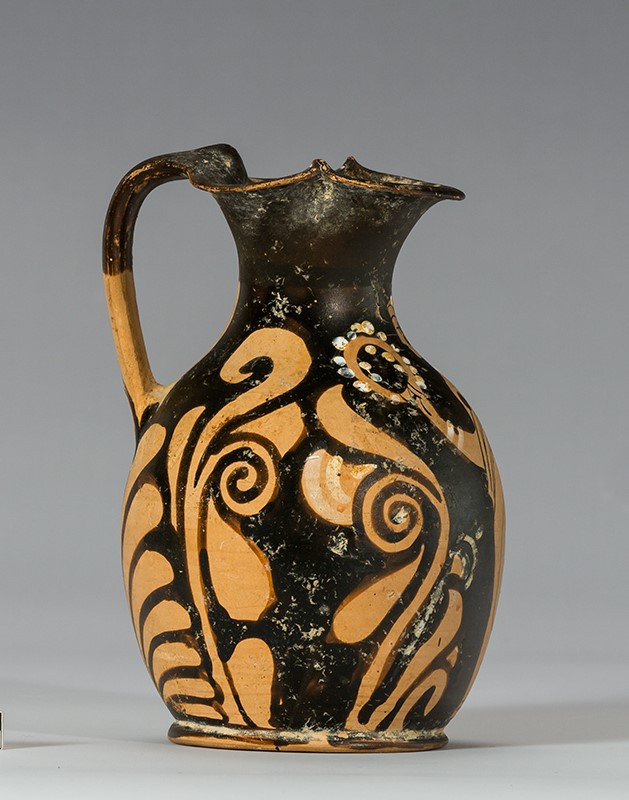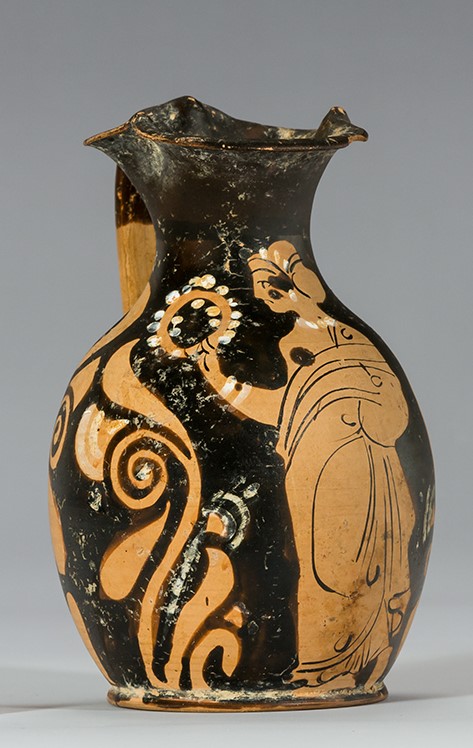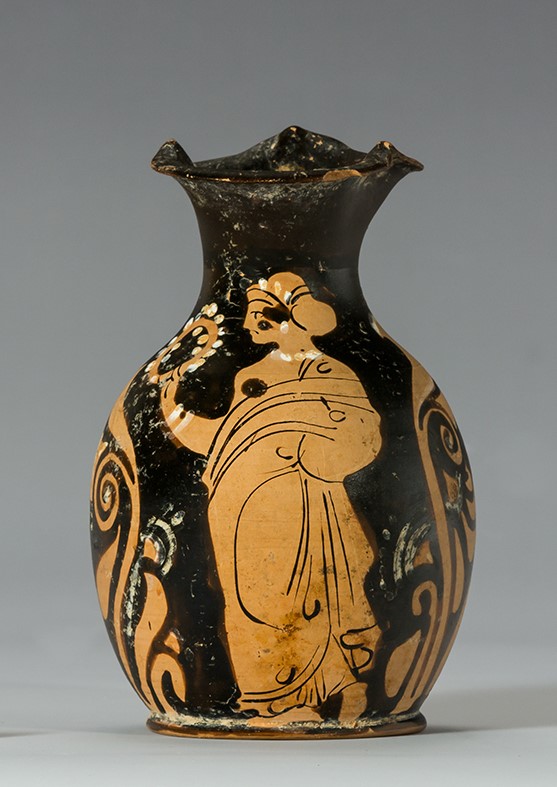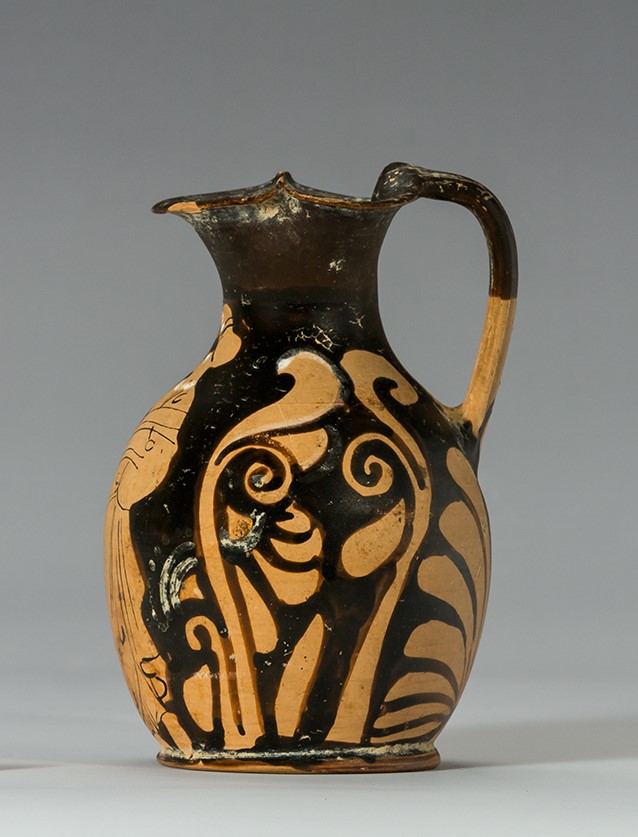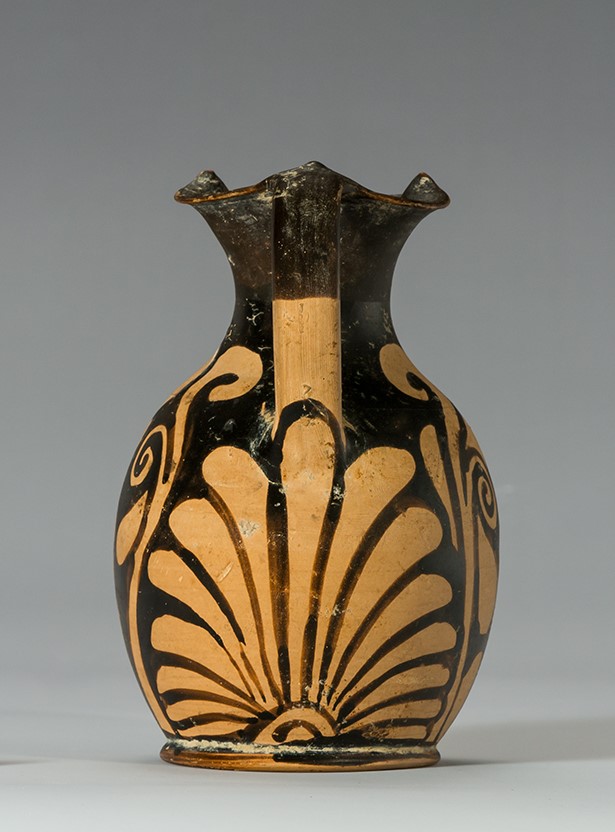Title: Trefoil Lipped Oinochoe with Red-figure Decoration - 2012.01
Acquisition number: 2012.01
Attribution: AV Group.
Author or editor: Glen Goodwin
Culture or period: Apulian Red-Figure.
Date: 350 - 320 BC.
Material: Clay - Terracotta
Object type: Pottery - Red-figure
Origin region or location: Italy
Display case or on loan: 8
Keywords: Apulian, Red Figure, AV Group
A.D. Trendall, The Red-Figured Vases of Lucania, Campania and Sicily, Oxford University Press (London 1967), 357.
2012.01
Trefoil-lipped Oinochoe with Red-figure Decoration
Capua. 350-320 BC.
Presented by the Bootes family in memory of Gordon Bootes.
Showing a woman wearing a himation over her gown and holding a wreath; a palmetter below the handle and elaborate florals at each side. Attributed to the AV Group.
The trefoil-lipped refers to the distinctive lip of the vessel, which resembles a three-leafed plant such as a clover.
The AV Group is a collection of Capuan pottery, so designated by John Beazley ‘because many of the vases in it have been attributed to a fabric of Avella’. It has now been pointed out that very few objects were actually produced in Avella, instead being found in Capua or its neighbourhood, but the term AV Group remains as a classification.
A.D. Trendall, The Red-Figured Vases of Lucania, Campania and Sicily, Oxford University Press (London 1967), 357.
